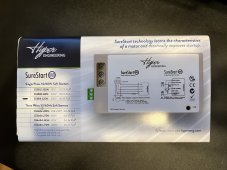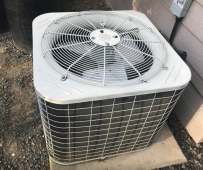iSwannie
Now that's WATT I am Talking About!
Greetings Solar Enthusiasts,
Over the past two years my solar system has been evolving. My Solar System now consists of (2) EG4 6500ex Inverters in parallel and (9) EG4 LifePower Batteries and (36) 275w Trina / Aptos Solar Panels. I have two EMPs installed, one for solar panels and one for battery system. My HVAC condenser is running on my solar system with a SOFT-START, which is different than a HARD-START. Do your research. I am also running AC IN with these inverters without any issues. See attached picture.

First of all I want to thank Will Prowse and this forum for the support in helping me build my Off-Grid solar/battery system over the last couple years. I have learned the hard way what you SHOULD NOT do when designing a solar system ?, which gives me the education of hard knocks. It has been fun for sure and challenging at times, but rewarding while learning from scratch.
@Signature Solar https://signaturesolar.com
thank you for your products and support in building my solar system.
@Mark Millet https://youtube.com/channel/UCbL5QkQBosz67DvJgLJ6Mug
thank you for your support in getting my wiring and presentation laid out.
Most important item I can think of beginning this journey is ALL wiring MUST be the RIGHT size. Do not cut corners to save money. Do your own research and reach out to electricians as needed. Recommended 2/0 AWG from inverters to busbar and 4/0 AWG from busbar to battery busbar in rack. These wires are NOT the same as 4 AWG or 2 AWG nor 1 AWG, but are referred to as 2 naught (2/0) AWG and 4 naught (4/0) AWG.
I will gladly help anyone with questions around my hard knocks.
Over the past two years my solar system has been evolving. My Solar System now consists of (2) EG4 6500ex Inverters in parallel and (9) EG4 LifePower Batteries and (36) 275w Trina / Aptos Solar Panels. I have two EMPs installed, one for solar panels and one for battery system. My HVAC condenser is running on my solar system with a SOFT-START, which is different than a HARD-START. Do your research. I am also running AC IN with these inverters without any issues. See attached picture.

First of all I want to thank Will Prowse and this forum for the support in helping me build my Off-Grid solar/battery system over the last couple years. I have learned the hard way what you SHOULD NOT do when designing a solar system ?, which gives me the education of hard knocks. It has been fun for sure and challenging at times, but rewarding while learning from scratch.
@Signature Solar https://signaturesolar.com
thank you for your products and support in building my solar system.
@Mark Millet https://youtube.com/channel/UCbL5QkQBosz67DvJgLJ6Mug
thank you for your support in getting my wiring and presentation laid out.
Most important item I can think of beginning this journey is ALL wiring MUST be the RIGHT size. Do not cut corners to save money. Do your own research and reach out to electricians as needed. Recommended 2/0 AWG from inverters to busbar and 4/0 AWG from busbar to battery busbar in rack. These wires are NOT the same as 4 AWG or 2 AWG nor 1 AWG, but are referred to as 2 naught (2/0) AWG and 4 naught (4/0) AWG.
I will gladly help anyone with questions around my hard knocks.
Last edited:






